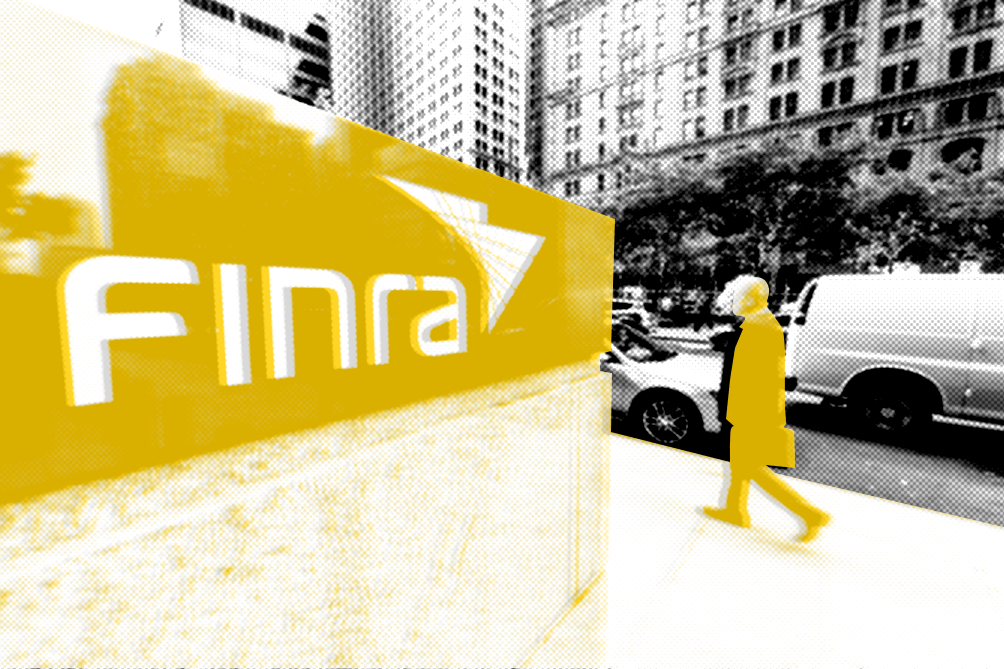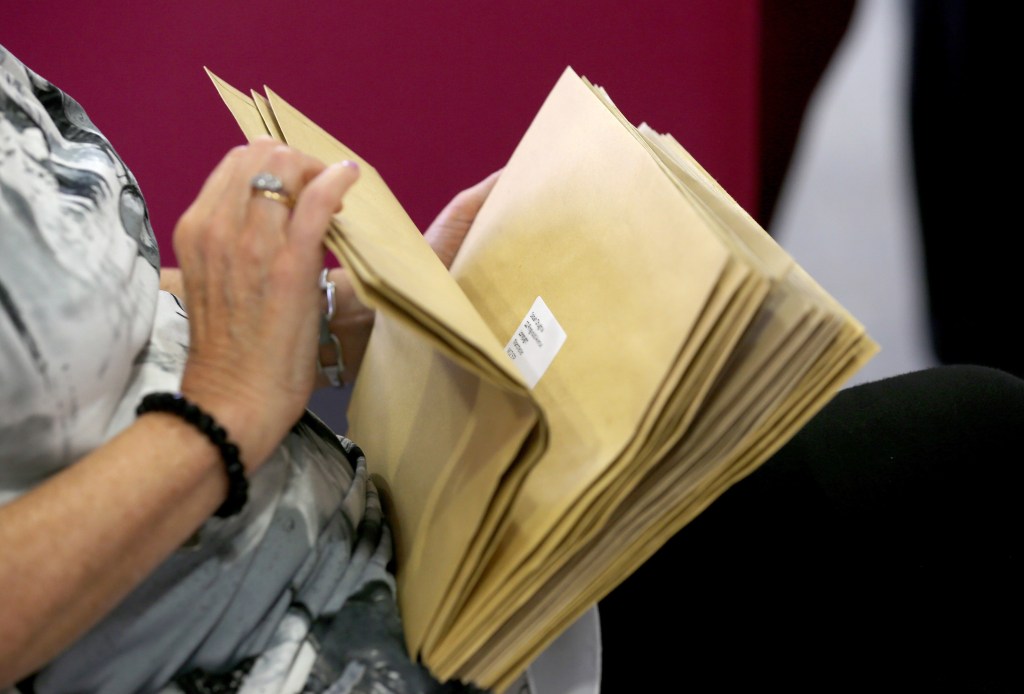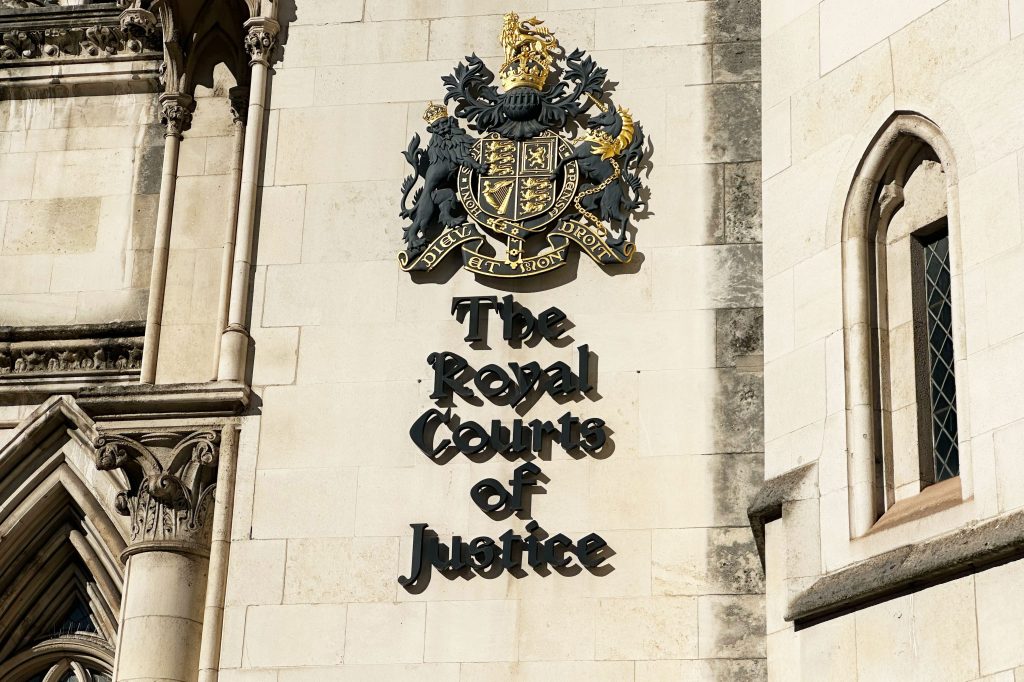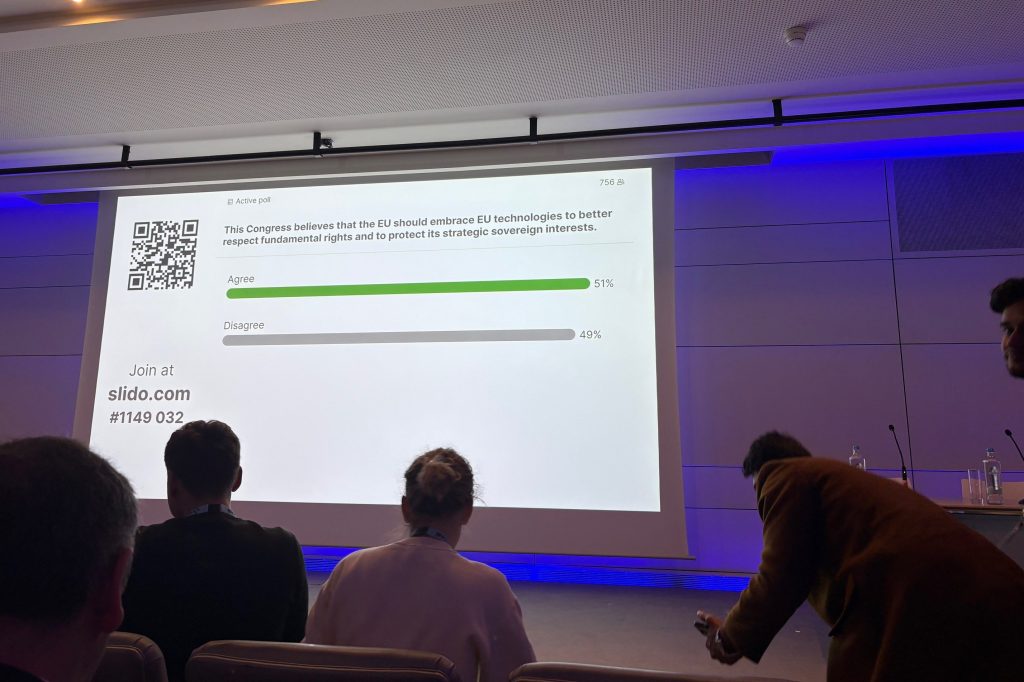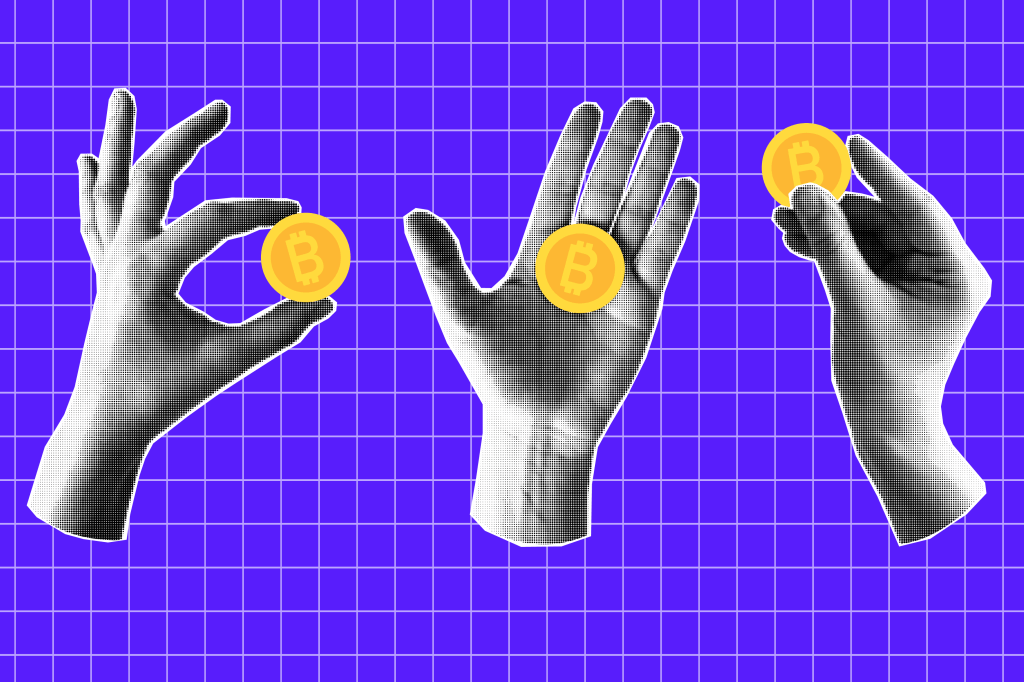There is a seemingly endless universe of jargon and hype surrounding crypto, so Vlada Gurvich explains some of the basic concepts, while Jean Hurley compares the regulatory frameworks in different markets.
DeFi
Decentralized finance, or DeFi, is a fast-growing sector of the cryptocurrency world. It aims to recreate the functions of banks, brokers and exchanges without the traditional intermediaries.
Instead of relying on institutions to process transactions and enforce agreements, DeFi uses blockchain technology and ‘smart contracts’ (self-executing programs stored on public ledgers) to let participants transact directly with one another. Advocates say this can make finance cheaper, faster and more accessible. Critics warn it is a largely unregulated ‘Wild West’ with serious risks.
In today’s centralized financial systems, most activities, from opening a savings account to trading stocks, are mediated by layers of middlemen. Banks safeguard deposits, exchanges match buyers and sellers, and clearing houses settle transactions. Consumers can’t simply bypass these intermediaries. Fees and gatekeeping are part of the cost of entry.
DeFi’s proposition is to disintermediate these processes. Instead of a bank taking your deposit at 0.5% interest and lending it out at 3% while keeping the spread, one consumer could lend directly to another user via a DeFi platform and keep the entire return.
Decentralized exchanges allow token swaps directly from one user’s wallet to another’s, without an exchange holding custody.
Ethereum is the backbone of most DeFi activity. While blockchain primarily tracks ownership of bitcoin, Ethereum’s design allows developers to program complex financial agreements directly into its network. This enables everything from lending protocols and insurance pools, to ‘flash loans’, which are borrowed and repaid in the same transaction.
Users access these services through decentralized applications or protocols, many of which operate entirely without a central company behind them.
The current DeFi ecosystem is already diverse. Lending and borrowing platforms such as Aave and Compound let users earn interest or obtain loans (usually over-collateralized with crypto). Stablecoins pegged to assets like the US dollar, such as USDC or DAI, provide a less volatile medium of exchange. Yield farming strategies move funds between platforms to chase the highest returns. Non-fungible tokens (NFTs) turn unique digital items into tradable assets.
Altogether, the sector measures its adoption through ‘total value locked’: the amount of assets deposited in DeFi protocols. At some points, the figure has topped $70 billion. Yet these opportunities come with some very steep risks. Smart contracts can contain coding errors that hackers exploit, draining funds in minutes. Without the equivalent of Federal Deposit Insurance Corporation insurance, stolen assets are generally unrecoverable.
Collateral requirements can be prohibitive, often exceeding 100% of the loan’s value. Stablecoins, despite their name, may lack the reserves to honor redemptions if panic selling hits. And scams, from Ponzi schemes to rug pulls, have claimed billions from unwary investors.
These dangers have drawn the attention of US regulators. The US SEC held a roundtable to explore whether DeFi should be regulated based on what it is (open-source software) or what it does (enabling financial transactions).
CSEC chair Paul Atkins has floated an “innovation exemption” to allow compliant experimentation, without full-scale registration.
Commissioner Hester Peirce argued that writing and publishing code was protected speech under the First Amendment and should be treated differently from operating a service. Chair Paul Atkins has floated an “innovation exemption” to allow compliant experimentation, without full-scale registration. Commissioner Caroline Crenshaw warned that rushing to accommodate industry demands without safeguards could harm retail investors and destabilize markets.
A possible compromise emerging from these debates is activity-based oversight: regulating specific functions, such as custody, market-making or fee collection, regardless of whether they are performed by a bank or a blockchain protocol. This approach could target real risks without undermining the decentralized architecture that makes DeFi unique.
For its supporters, DeFi represents a chance to build a more open, transparent and globally accessible financial system, one in which anyone with an internet connection can participate. For skeptics, it’s an untested experiment with the potential to replicate, or even amplify, the worst excesses and failures of previous financial crises.
Which camp is ultimately proven to be right and whether DeFi matures into a safer, mainstream alternative or continues to remain a volatile niche will depend not only on how the technology and innovation develop, but on the regulatory framework that emerges in the coming years and who is responsible for it.
Cryptocurrency and fiat currency
Money, in its many incarnations, is a simple idea: a medium of exchange, a store of value, a unit of account. Yet the ways in which societies implement that idea could hardly be more different.
Government-issued fiat currencies and privately created cryptocurrencies operate on opposite ends of the spectrum. Fiat currency is the familiar form: coins, notes and bank balances managed by central banks. Its value rests on the credibility of the issuing state and the health of the underlying economy.
This arrangement allows governments to respond to crises by adjusting interest rates or expanding the money supply, potentially stabilizing growth. It also creates a temptation to over-issue, with inflation the result. While fiat systems in advanced economies tend to create stability, there have been lots of cases of mismanagement leading to currency collapse.
Cryptocurrencies emerged in 2009 with bitcoin, offering an alternative not anchored in government authority but in mathematics. Transactions are validated through decentralized networks, using blockchain ledgers maintained by participants rather than intermediaries. Supply rules are hard-coded: bitcoin, for instance, will never exceed 21 million units. Scarcity makes it immune to inflationary tendencies of fiat, but removes the flexibility to adjust supply.
Speed and cost of transactions illustrate another contrast. Within domestic banking systems fiat payments can clear in seconds, but cross-border transfers can be slow and expensive, burdened by intermediaries and compliance checks. Crypto enables near-instant international transfers at relatively low cost. Yet in periods of network congestion, fees can spike and delays mount.
On privacy, fiat offers two faces. Cash transactions are anonymous, but digital payments leave a trail, accessible to banks and regulators. Crypto transactions are recorded on public blockchains, visible to all yet tied only to cryptographic addresses. This pseudonymity can protect individual privacy but facilitates crime, from money laundering to sanctions evasion, promoting growing regulatory scrutiny.
Billions of people remain unbanked, especially in developing countries, shut out from the formal financial system.
In terms of accessibility, fiat money enjoys universal acceptance, backed by laws designating it legal tender. It is embedded in a web of financial products (loans, mortgages, insurance) that lubricate modern economies. But billions of people remain unbanked, especially in developing countries, shut out from the formal financial system.
Cryptocurrencies offer access to anyone with an internet connection, an attractive proposition in economies with unstable banking or volatile national currencies. That promise is tempered by the volatility of currencies themselves.
Environmental impact is another dividing line. Fiat systems consume resources in printing, distribution and infrastructure, but use is modest compared with the demands of proof-of-work cryptocurrencies such as bitcoin, which uses as much energy as a mid-sized country. Alternative consensus mechanisms, like proof-of-stake, reduce the toll but are not yet universal.
Each system’s weaknesses mirror its strengths. For many, the pragmatic answer is to combine them. The contest between fiat and crypto is not zero-sum. Rather than a revolution sweeping away an old order, the future may be an ecosystem in which centralized and decentralized monies coexist, serving different purposes for different users. Fiat may remain the heart of commerce and government finance, while crypto offers autonomy and rapid cross-border settlement. The world will live with two monetary species – evolved differently, cohabiting uneasily, and each shaping the other’s trajectory.
Broader financial access
The claim that cryptocurrency can broaden financial access is not about speculative tokens for banks and compliance officers, it’s about whether blockchain-based market infrastructure can be harnessed under a regulated framework to profitably and safely serve clients who are currently outside the reach of conventional banking.
The core driver is how digital asset rails alter the cost, control, and reach of financial intermediation.
Traditional financial systems are constrained by batch-based clearing, time-zone mismatches, and intermediary risk. Tokenization of regulated assets, particularly high-grade collateral such as US Treasuries, combined with atomic, 24/7 settlement enables instantaneous collateral mobility.
This is not just an efficiency gain for large dealers, it can underpin micro-repo and intraday credit products at ticket sizes uneconomical on legacy rails. A regional bank could, in theory, extend same-day working capital to small and medium-sized enterprises in emerging markets against tokenized treasuries without the cost and delay of correspondent banking claims.
Inclusion fails when compliance costs overwhelm the revenue potential of small accounts. Permissioned token standards such as ERC-3642 allow enforcement of anti-money-laundering/know your customer rules, investor qualification, and transfer restrictions at the token level. This changes the economic model: instead of front-loading all compliance costs at onboarding, rules have to ‘travel’ with the asset. A bank could distribute micro-denominated, regulatory compliant instruments globally, confident that any secondary transfers associated with them would still respect jurisdictional restrictions.
From a regulator’s perspective, blockchain is just another form of books and records. The SEC’s reluctance to define acceptable blockchain-based recordkeeping has stalled adoption.
But if guidance confirmed that certain privacy-preserving, permissioned blockchains met existing recordkeeping standards, banks could service thin-file customers, whose transaction history exists entirely on-chain. These histories could be used for credit scoring or due diligence without sacrificing privacy, because access can be provisioned selectively to counterparties and regulators.
Instead of flying blind until suspicious activity reports are filed, institutions and supervisors can see pre-programmed triggers on higher-risk flows.
De-risking has led many large banks to cut correspondent relationships in high compliance cost jurisdictions, choking off cross-border payments for legitimate customers. Blockchain-based settlement layered with regulator-visible nodes allow compliance monitoring in real time.
Instead of flying blind until suspicious activity reports are filed, institutions and supervisors can see pre-programmed triggers on higher-risk flows. This would make cross-border services commercially viable in places where they are now shut off.
The recurring theme in cryptocurrency regulatory discussions is that without definitional precision (distinguishing tokenized traditional securities, native digital assets, and purely consumptive NFTs) the US will not build the regulatory certainty institutions require.
For banks, this is more than a policy gripe: without clear asset classification, risk-weighting remains uncertain, capital allocation is frozen and, as a result, product development for under served segments ends up being deprioritized.
Other jurisdictions (EU, Singapore, Luxembourg) have already exploited its gap to attract institutional pilots in tokenized assets.
The inclusion opportunity is not in speculative trading, but in using compliant, programmable, low-cost settlement and custody to deliver safe assets, credit, and payments to clients who have been excluded by cost and risk constraints.
For that to happen in the US, regulators must shift from case-by-case enforcement to frameworks that let compliance teams integrate these rails into existing risk architectures. Without that, the potential for crypto to broaden finance will remain largely theoretical.
Borderless, code-based system
The dispute over how best to oversee digital assets is not merely a clash between enthusiasm and skepticism; it is a contest between the distinct philosophies of market design.
One aims to hardwire protections directly into the technology, seeking to neutralize threats before they materialize. The other insists that the safest route is to fold crypto into existing financial structures, the legal frameworks and operational safeguards of which are already tested.
Advocates of the first approach treat fraud prevention as an engineering challenge. They point to the speed of crypto transactions and the ease of cross-border transfers, which render traditional enforcement too slow to protect retail investors.
In a ‘rug pull’, a developer can drain liquidity from a project and disappear in minutes, leaving legal remedies lagging far behind. To counter this, they propose systems that combine developer identity verification, automated escrow of newly minted tokens, and algorithmic scoring of project trustworthiness.
The intention is to make it harder for bad actors to vanish, to prevent sudden liquidity drains by releasing tokens gradually, and to provide investors and exchanges with early warning when a project shows signs of excessive risk.
Proponents draw a parallel with anti-money-laundering transaction monitoring in banking, arguing that while law remains essential its operational force should be applied continuously through technology rather than after the fact.
The opposing school of thought rejects the idea of embedding such controls directly into code, preferring instead to adapt crypto to the machinery of conventional markets.
Under this view, certain digital assets can be treated as close analogues to foreign currencies and commodities, allowing regulators and exchanges to apply the same margin requirements, clearing protocols and surveillance systems that already govern derivatives and other complex financial products.
Nasdaq’s proposal for Bitcoin Index Options follows this line, framing the contracts as an extension of existing foreign currency options. Bitcoin indices have shown high correlation to spot bitcoin exchange-traded products, making them, in Nasdaq’s argument, suitable for precise hedging. The contracts would be cash-settled through the Options Clearing Corporation, which would enforce familiar operational and risk-management standards.
Embedding identity verification and trust-scoring mechanisms in code risks turning developers into de facto regulators.
Integration supporters regard this familiarity as strength – it reduces uncertainty, reassures institutional investors and avoids the complications of building and governing entirely new layers of technical oversight.
Critics of automation warn of unintended consequences. Embedding identity verification and trust-scoring mechanisms in code risks turning developers into de facto regulators, with unclear liability and potential privacy breaches.
They question whether algorithms can ever stay ahead of determined fraudsters, especially if risk-scoring criteria become predictable and open to manipulation. There are also concerns over governance.
Determining who sets and updates these criteria, and how their neutrality is guaranteed, is no small matter. Concentrating such control in a small number of approved providers could entrench bias and create barriers for smaller innovators.
Critics of integration raise their own alarms. The assumption that digital assets will behave like traditional financial instruments is, they argue, unproven. Bitcoin’s volatility, fragmented liquidity and susceptibility to manipulation on offshore exchanges could destabilize regulated markets into which it is introduced.
Even a well-regulated options market cannot protect participants if the reference prices for the underlying asset are unreliable. Without real-time surveillance of on-chain activity, derivatives may be priced on distorted benchmarks, embedding systemic risk into the broader financial system.
Both approaches share the same goal of investor protection, but they start from very different premises. The automation model assumes that the technology itself should enforce the rules and prevent harm before it occurs. The integration model assumes that existing governance structures, adapted where necessary, can extend their protections into new markets without reinventing the regulatory wheel.
In practice, a hybrid may prove most resilient. Code-level safeguards could address the uniquely digital risks of crypto trading, while integration into established infrastructure could deliver the predictability and legal clarity sought by institutional players.
The global regulatory landscape
| US | |
|---|---|
| Key regulators | SEC, CFTC, FinCEN, OCC, state regulators. |
| Overall approach | Evolving towards greater clarity, with recent legalization marking a significant push for a clearer framework. |
| Key legislation | No single comprehensive federal law. Enforcement actions, agency guidance (SEC on securities, CFTC on commodities, FinCEN on AML). The GENIUS Act (stablecoins) is now law. The CLARITY Act (market structure) and the Anti-CBDC Surveillance State Act have both passed the House and are now in the Senate. |
| Cryptoasset classification | “Security” (Howey Test), “commodity” (bitcoin, ether in some cases), “currency” (less common). Case-by-case determination. The CLARITY Act, if enacted, would introduce a framework to distinguish between “digital commodities” and “restricted digital assets” with a certification pathway for issuers. |
| Stablecoin classification | The GENIUS Act has been signed into law, establishing a comprehensive national regime for payment stablecoins. |
| Custody services | SEC guidance on “qualified custodians” for digital asset securities. State-level trust company charters. OCC guidance for banks providing custody. The CLARITY Act includes requirements for platforms to segregate customer and proprietary assets. |
| AML/CFT | Bank Secrecy Act enforced by FinCEN. FATF-aligned, with Travel Rule for VASPs. |
| Market integrity/ consumer protection | SEC and CFTC enforcement actions against fraud and manipulation. State “blue sky” laws. Investor alerts. The House-passed CLARITY Act sets requirements for platforms on fair trading and anti-manipulation. |
| Timeline for full implementation | The GENIUS Act is now law. The CLARITY Act and the Anti-CBDC Act Surveillance State Act have now passed the House and move to the Senate vote. |
| UK | |
|---|---|
| Key regulators | FCA, Bank of England, HM Treasury. |
| Overall approach | Evolving, proactive, aims to be a “global hub” for crypto assets. Phased implementation under a risk-based and “same risk, same outcome” approach. |
| Key legislation | Financial Services and Markets Act (FSMA) 2023 provides powers. Draft statutory instruments, for example, Financial Services and Markets Act 2000 (Regulated Activities and Miscellaneous Provisions) (Cryptoassets) Order 2025, and FCA guidance in development. |
| Cryptoasset classification | Activity-based. Categorizes into e-money tokens, security tokens, and unregulated crypto assets (which may become regulated based on activity). Property (digital assets etc) Bill clarifying property rights. |
| Stablecoin classification | Regulatory framework being developed, with draft legislation in mid-2025 focusing on integrating stablecoin issuance into existing payment regulations (likely as e-money). |
| Custody services | FCA authorization required for specific activities (eg safeguarding of “qualifying crypto assets” and “specified investment crypto assets” under new draft legislation). |
| AML/CFT | Money Laundering Regulations 2017 (MLRs) applies to crypto asset firms. FATF-aligned. Travel Rule implementation expected. |
| Market integrity/ consumer protection | FCA financial promotion rules apply. Upcoming regulations will cover trading platforms, ensuring consumer protection, transparency, and market abuse monitoring (aligned with MAR). The FCA will lift the ban on retail access to crypto ETNs from October 8, 2025, but with financial promotion rules and consumer duty requirements in place. The ban on crypto derivatives remains. |
| Timeline for full implementation | Phased implementation, with significant new regulatory requirements, expected to come into effect from 2025 into 2026 for various activities. New retail access to crypto ETNs goes into effect on October 8, 2025. |
| EU | |
|---|---|
| Key regulators | ESMA, EBA, national competent authorities. |
| Overall approach | Comprehensive, harmonized framework (MiCA) largely in effect or soon to be fully applicable. Technology-neutral principles applied. |
| Key legislation | Markets in Crypto Assets Regulation (MiCA) (stablecoin rules applicable from June 2024, full applicability for CASPs from late 2024/early 2025). Digital Operational Resilience Act (DORA). AMLD6. |
| Cryptoasset classification | MiCA provides specific definitions for “crypto assets,” “asset-referenced tokens” (ARTs), “e-money tokens” (EMTs), and “other crypto assets.” |
| Stablecoin classification | MiCA provides a comprehensive framework, with strict requirements for issuers of ARTs and EMTs, including authorization, reserve requirements, and governance. Rules for ARTs/EMTs applicable from June 2024. |
| Custody services | MiCA mandates specific requirements for crypto asset service providers (CASPs) offering custody services, including segregation of client assets, robust internal controls, and insurance. |
| AML/CFT | Money Laundering Regulations 2017 (MLRs) applies to crypto asset firms. FATF-aligned. Travel Rule implementation expected. |
| Market integrity/ consumer protection | MiCA includes comprehensive investor protection rules (eg white paper requirements, clear disclosures, suitability assessments) and market abuse prevention (aligned with MAR). |
| Timeline for full implementation | Stablecoin rules under MiCA applicable from June 2024. Full MiCA applicability for other CASPs from December 2024 / Q1 2025, with a potential transitional |

